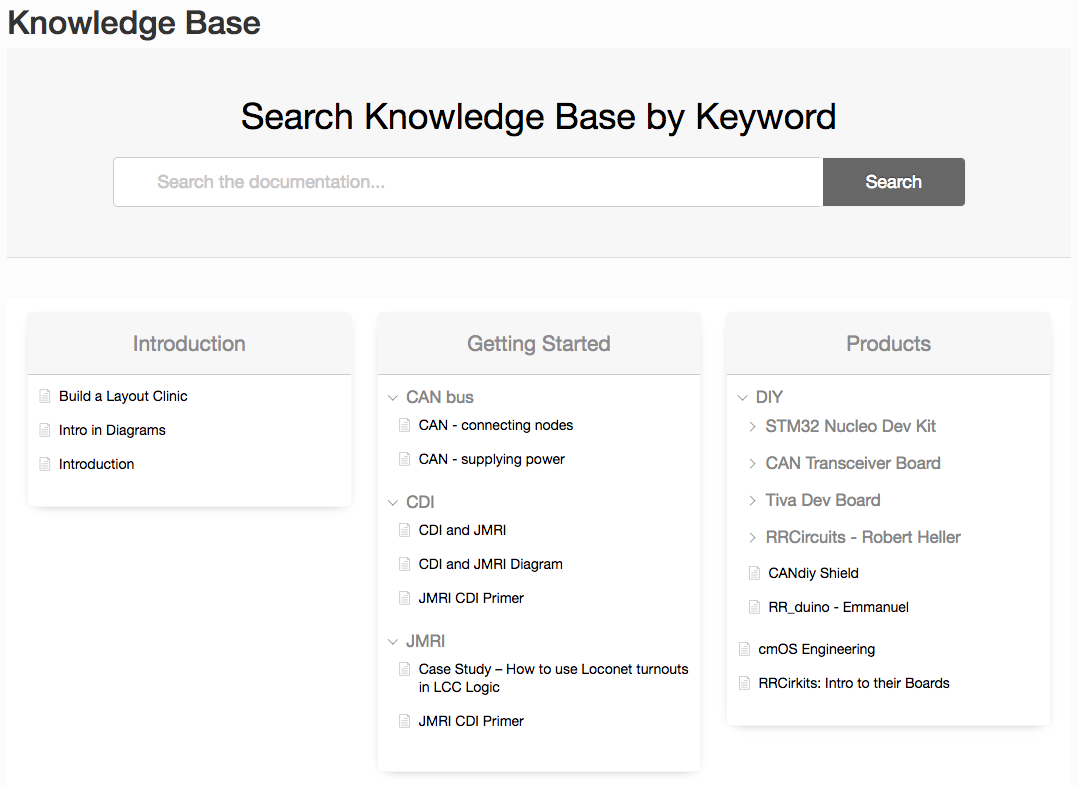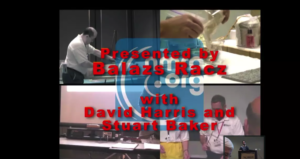We’re pleased to announce the latest set of LCC Standards Documents (2021-04-25) were adopted by the NMRA Board of Directors at the 2-July-2021 meeting and have been posted on the Layout Command Control™ (LCC) page.
The complete set can also be downloaded as a single ZIP file here: LCC-Standards-and-TechNotes-Adopted-2021-07-02
Most of the documents submitted to the NMRA would usually go through their normal public comment period, as recommended in the “Summary of Changes to LCC Documents 2021-04-25” document.
However, after discussion with the NMRA LCC Advisory Group during the submission process, it was decided the NMRA’s usual public comment period wasn’t necessary for this set of LCC documents, as they had effectively been through that already during the OpenLCB Group’s editing and review process and that little would likely be gained with an additional NMRA public comment period. Some extra comments were then added to the “Summary of Changes” document to provide the context and justification for recommending the documents be adopted immediately by the NMRA. This is included below for convenience.
Summary of Changes to LCC Documents 2021-04-25 (extra comments)
Documents with only Coversheet and CC License changes
The changes to the first set of documents have effectively “no change to any standards content”, the changes are just to the Licensing details in the footer and changes to the NMRA cover sheet to include the logo with the ® symbol, add TM symbol to the LCC text and adds the legal fine-print. Should be fine to adopt immediately.
TN-9.7.0.1-Glossary-2021-04-25.pdf
TN-9.7.0.2-CommonInformation-2021-04-25.pdf
S-9.7.1.1-CanPhysical-2021-04-25.pdf
TN-9.7.1.1-CanPhysical-2021-04-25.pdf
S-9.7.2.1-CanFrameTransfer-2021-04-25.pdf
TN-9.7.2.1-CanFrameTransfer-2021-04-25.pdf
S-9.7.3-MessageNetwork-2021-04-25.pdf
S-9.7.3.1-EventTransport-2021-04-25.pdf
TN-9.7.3.1-EventTransport-2021-04-25.pdf
S-9.7.3.2-DatagramTransport-2021-04-25.pdf
TN-9.7.3.2-DatagramTransport-2021-04-25.pdf
TN-9.7.4.1-ConfigurationDescriptionInformation-2021-04-25.pdf
S-9.7.4.2-MemoryConfiguration-2021-04-25.pdf
TN-9.7.4.2-MemoryConfiguration-2021-04-25.pdf
S-9.7.4.3-SimpleNodeInformation-2021-04-25.pdf
TN-9.7.4.3-SimpleNodeInformation-2021-04-25.pdf
-
- Changed LCC logo to include the ® symbol
- Changed “Layout Command Control” to have the TM symbol
- Added the NMRA Legal Disclaimer fine-print
- Changed the OpenLCB license to “Creative Commons Attribution-ShareAlike 4.0 International”
Documents that have been Adopted after Public Comment
These two documents were in draft since Feb-2016 but as they were the only docs in-progress at the time they got delayed. The protocol is in use already by manufacturers and supported in JMRI and hasn’t generated any issues we know about. Should be fine to adopt immediately.
S-9.7.4.4-FirmwareUpgrade-2021-04-25.pdf
TN-9.7.4.4-FirmwareUpgrade-2021-04-25.pdf
Documents with Changes for Public Comment
The changes in two docs below correct an oversight in how we assign a 24-bit address range to Manufacturers without a DCC Manufacturer ID. We would have had to allocate them a range in the DIY area which seemed the wrong “status” association. This change puts them right next to Manufacturers WITH a DCC Manufacturer ID. The other changes were fixing typos. Should be fine to adopt immediately.
S-9.7.0.3-UniqueIdentifiers-2021-04-25.pdf
TN-9.7.0.3-UniqueIdentifiers-2021-04-25.pdf
-
- Added to section 5.4 Manufacturer Specific for manufacturers without a NMRA Assigned DCC Manufacturer ID
- Corrected comments in 5.7 Specifically Assigned by Request for 16-bit and 24-bit allocations
The changes in the next two docs add Well-Known Event definitions for two things. 1) Notify the occurrences of Power Brown-Outs onto the LCC Bus. 2) Adds support for interoperability of LCC and DCC Accessory Decoder (Turnouts + Signals) States. These changes have also been around for a long time (several years) and have been implemented already – they were simply delayed in processing and should be fine to adopt immediately.
S-9.7.0.4-EventIdentifiers-2021-04-25.pdf
-
- In section 5.2 Well-Known Automatically-Routed added:
- Power supply brownout detected below minimum required by node
- Power supply brownout detected below minimum required by standard
- In section 5.3 Well-Known added:
- Activate basic DCC accessory decoder address
- Deactivate basic DCC accessory decoder address
- Send aspect to extended DCC accessory decoder address
- In section 5.2 Well-Known Automatically-Routed added:
TN-9.7.0.4-EventIdentifiers-2021-04-25.pdf
-
- Add section 2.5.2.3 Power Supply Brownout Detected
- Add section 2.5.3.3 Basic DCC Accessory Decoder
- Add section 2.5.3.4 Advanced DCC Accessory Decoder
The changes in the next two docs simply fix typos to reflect reality and should be fine to adopt immediately.
TN-9.7.3-MessageNetwork-2021-04-25.pdf
-
- Corrected example where message length was incorrectly displayed in section 2.3.5.1 Reject Addressed Optional Interaction, lines 271 – 273
S-9.7.4.1-ConfigurationDescriptionInformation-2021-04-25.pdf
-
- Corrected definition of Newline delimiter (0x0A) in section 5 Format (Normative) on line 41
New Documents for Public Comment
The next two docs have also been around for some years but needed to be “finished” when LogicRail Technologies approached us wanting to produce a LCC Fast Clock. There were minor changes (typos and readability) in 7-Mar-2021, but the previous changes were Sep-2018. Prototypes have been made and are working fine so these too should be fine to adopt immediately, even though they are new to the public.
S-9.7.4.5-BroadcastTime-2021-04-25.pdf
TN-9.7.4.5-BroadcastTime-2021-04-25.pdf


